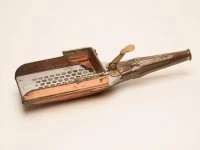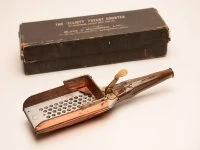Nursery Artefacts
Some of the artifacts used in the nursery are now located at Knutsford Heritage Centre. The images, below, give a flavour of aspects of the business.
The seed counter, made by Blake and Mackenzie of Liverpool, was used for counting sweet peas or any round seed of the same size.
Courtesy of Knutsford Heritage Centre.
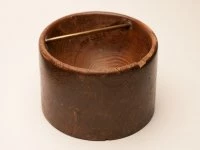
When measuring seed a seed spoon would be filled and pulled along under the bar to make sure that every measure was the same. Surplus seeds knocked off by the bar were collected in the container.
Courtesy of Knutsford Heritage Centre.
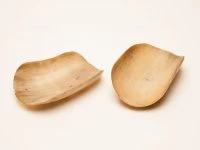
The bone seed scoops were used for scooping up seeds to fill seed measures.
Courtesy of Knutsford Heritage Centre.
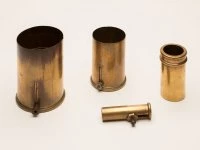
The vegetable seed measuring tubs are made of brass and in some cases are adjustable. The small lever on the side could be used to raise the base and produce a smaller measure.
Courtesy of Knutsford Heritage Centre.

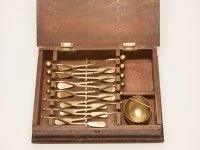
Numbers 1-28 graduated brass seed spoons and brass seed container were kept in two wooden boxes with slots to hold the spoons in place. The very small spoons would have been used to measure seeds like Begonia and Gloxinia and the large spoons to measure seeds like Marigold and Sunflower. The seeds were measured into seed packets. A handwritten list of spoons and seeds can be seen in the lid of the second box. The spoons came from a Liverpool firm called Blake and Mackenzie who also used to print some of the seed packets.
Courtesy of Knutsford Heritage Centre.
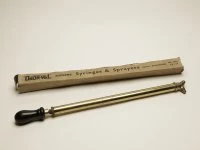
The Dronwal plant sprayer was purchased from Caldwell's complete with its cardboard box priced 15s 9d.
Sprayers are used in horticulture for applying a spray of water, foliar feed or pesticide/fungicide in solution to the foliage of a plant. The traditional and simplest type of sprayer is a piston-type brass syringe (like a bicycle pump) consisting of a cylinder into which the liquid is drawn by suction when the handle is pulled back. When the handle is pushed in, a plunger, usually in leather, forces the liquid out through an adjustable or exchangeable nozzle or nozzles.
In general fine sprays are more effective but at the same time the spray should penetrate all the crevices and cover all the surfaces if the plant. The undersides of the leaves are particularly important because many pests collect there. in order to achieve this the end of the syringe is normally at a slight angle.
Nowadays syringes tend to have been superseded by pneumatic pressure sprayers or mechanically operated sprayers.
Sprayer donated to Cheshire Gardens Trust.
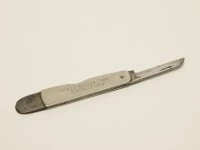
This budding knife, inscribed with Caldwell's name, is thought to have been kept in an office cabinet.
Budding is a type of grafting often used to propagate fruit trees and roses. The commonest method is shield budding, usually done during the summer when the plant is in full growth. A well developed axillary bud, together with a long 'shield' of bark, is taken from one plant and inserted into a T-shaped slit made in the bark of another. In this way a less robust plant can be grown on a more vigorous rootstock.
Because of the precision required for this operation the budding knife, one of the horticulturalist's more refined tools, has been designed specifically for the purpose. The blade is extremely sharp and usually has an angled point at the end of the cutting edge.
Traditionally the handle was made of ivory or bone, although some were metal, and modern budding knives tend to have handles of synthetic material. The handle is flat in section and is further flattened at its rounded end so that it can be used to lift up the bark when the incision to take the bud has been made. Some knives have a thin rounded brass (or other metal) protuberance at the end of the handle for the same purpose.
Budding knives usually have a blade under 2 inches long and a handle of up to 4 inches.
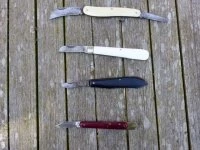
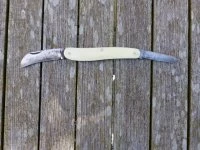
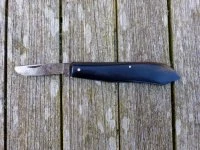
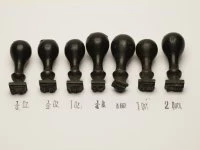
The wooden seed stamps have a rubber base showing the quantity. They were used to stamp the seed packets filled in the nursery.
Donated to Cheshire Gardens Trust.
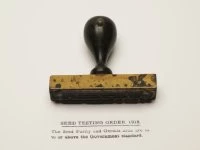
This stamp was also used on the seed packets. It verified the standard and purity of seeds enclosed.
Donated to Cheshire Gardens Trust.

